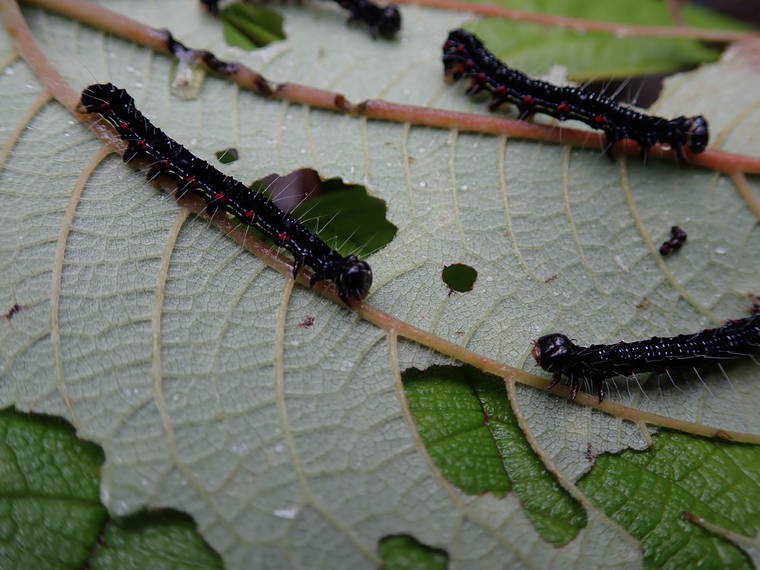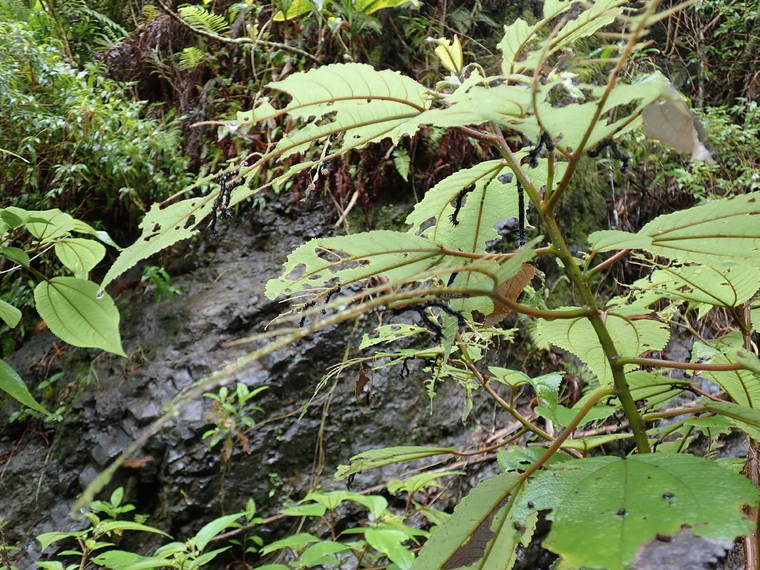New invasive caterpillar threatens rare native plants on Maui

COURTESY DLNR
Ramie caterpillars are black and sometimes yellow, with bright orange-red spots and white hairs.

COURTESY DLNR
Ramie caterpillars are black and sometimes yellow, with bright orange-red spots and white hairs.


It’s fuzzy and colorful, and when it is trying to scare off predators, it rears up its head, waves it around and spits.
State officials are warning of a new, invasive insect destructive to mamaki plants – the Ramie caterpillar — which has been detected on Maui.
The Ramie caterpillar, which eventually becomes a moth, or Arcte coerula, is native to Southeast Asia, according to the state Department of Land and Natural Resources.
They were found in the Philippines, Japan, Australia and New Zealand, but were detected for the first time in the United States last fall, and are now on Maui. A biologist looking for native snails found the Ramie caterpillars feeding on mamaki growing in Olowalu, Maui.
Reports of the Ramie caterpillar have since been reported in Olinda, Ulupalakua, Waiehu, Iao, Kahakuloa, Makawao and Ukumehame.
Wondering how to spot them?
Don't miss out on what's happening!
Stay in touch with breaking news, as it happens, conveniently in your email inbox. It's FREE!
Ramie caterpillars are black and sometimes yellow, with bright orange-red spots and white hairs. In comparison, the native Kamehameha butterfly larvae are black when first hatched, and greenish when ready to make a cocoon. Also, Kamehameha caterpillars don’t behave the same way when scaring off predators, according to Keahi Bustamente, a Maui-based invertebrate biologist working with the state Division of Forestry and Wildlife.
The Ramie moth is potentially destructive because it is laying its eggs on several plants, including mamaki and akolea, which are food sources for the Kamehameha caterpillar. Many of the 14 species in the mamaki family are endemic to Hawaii, meaning found only here, and some are already critically endangered.
“Mamaki and other plants in that family provide habitat for animals and other plants,” said Bustamente in a news release. “They are an important species in wet understories, they protect watersheds.”
How the invasive, Ramie moth was brought to Maui remains unknown, according to DLNR, but people could have transported its eggs on the leaves of an imported plant. They can potentially spread with the wind, or to other islands via plants.
The public is encouraged to report new sightings of the invasive caterpillar and moth to the statewide hotline at 643-PEST or online at 643pest.org Opens in a new tab.




